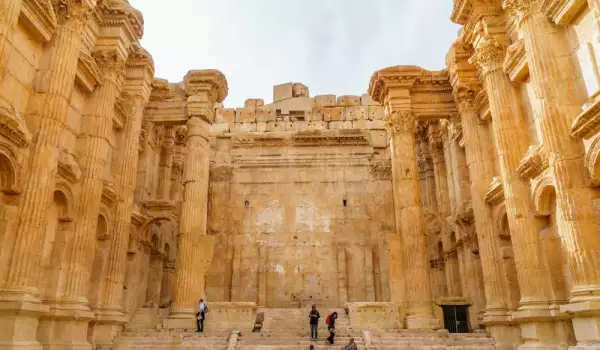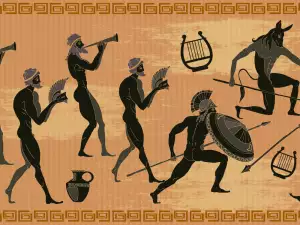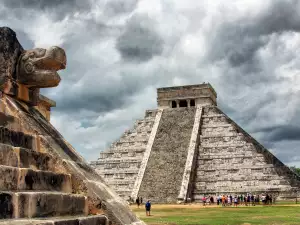Nowadays we call money Phoenician signs after the people who bequeathed us this means of payment. To the same people we also owe another great invention - the alphabet. All known modern alphabets trace their origins to the Phoenician alphabet. The state Phoenicia and the people calling themselves Phoenicians no longer exist, but their legacy continues to be enjoyed by humanity. Who are the Phoenicians? Where did they live and when did they disappear? What do we know about them?
Information about the Phoenicians in historical sources
Information about the Phoenicians today we get not from their written monuments, but from other peoples who left their testimonies about these ancient people. Information about them is also found in the Bible.
According to historical sources and biblical accounts, the Phoenicians were part of the Canaanite tribes that lived in the territories of today's Lebanon, without the land of Canaan having firmly established borders.
Their territory was floating. They were first mentioned in the 15th century BC. The ancient Greeks first called them Phoenicians. The name is given from a genus of purple dye, the color of emperors in ancient times. It was very valuable and was procured by Phoenician merchants.
The territory of ancient Phoenicia included separate cities, the most important of which were Sidon, Tire and Byblos. The territory they occupied was small, not particularly rich in raw materials, but the people of Phoenicia managed to create a brilliant civilization there, which colonized the entire coast of the Mediterranean Sea.
The beginning of this culture can be traced back to 1200 years before Christ, when a new era opened before the people of Phoenicia. They freed themselves from the dependence of their powerful neighbors - Egypt and the Hittite Empire and gained their autonomy. This allowed them to develop their markets. The Phoenicians were skilled traders and quickly amassed profits, founding new cities in the Mediterranean region.
The destruction of Carthage, which dominated Phoenicia, by ancient Rome ushered in the decline of the Phoenicians. In Roman times, Phoenicia was part of the Roman province of Syria.

Phoenician trade skills, government and religion
The incredible Phoenician successes were due to their astonishing trading abilities. In addition to purple, they were able to trade in ivory, cedar wood, fir and all kinds of glass, silver and copper objects. Their trade exchange was a real discovery in ancient times.
They stopped their ships on the shore, unloaded all their goods and stacked them side by side, then returned to the ship and lit a fire to attract the attention of the local population. People would go and look at their goods and leave gold as much as they thought they should give for the goods and go away.
The merchants got off the ships and if they thought that the gold was not enough, they returned again without sailing. The people left more gold, until what the Phoenicians demanded was reached. This tactic proved very successful, the Phoenicians always managed to impose their prices and quickly amassed large profits. Besides being excellent traders, they were good navigators as well as skilled craftsmen.
Their state structure is not well studied due to lack of information. Most likely, the powerful merchant class drove the state affairs of individual city-states that were ruled by dynasties.
Their religious beliefs were taken from those of the Canaanite tribes, where each individual city had its own patron saint. They continued to perform ancient rituals, including child sacrifice of the first-born male child.
The legacy of the Phoenicians
The most significant heritage of the people of Phoenicia is cultural, it is the alphabet. It is the prototype of all alphabets existing today in the world. This prototype of writing was phonetic and only consonant sounds were marked with a sign. It was written from left to right. Phoenician traders spread the alphabet, the Greeks revised it, by adding signs for vowels and then it was borrowed by other nations.
The other legacy left to us from these ancient people is coins. They were included in circulation to facilitate trade contacts. A common medium of exchange for all nations was needed and the Phoenicians invented the pieces of various precious metals, by which the price of goods was denoted. The value of the coins was determined by the type of metal, its size and weight.











